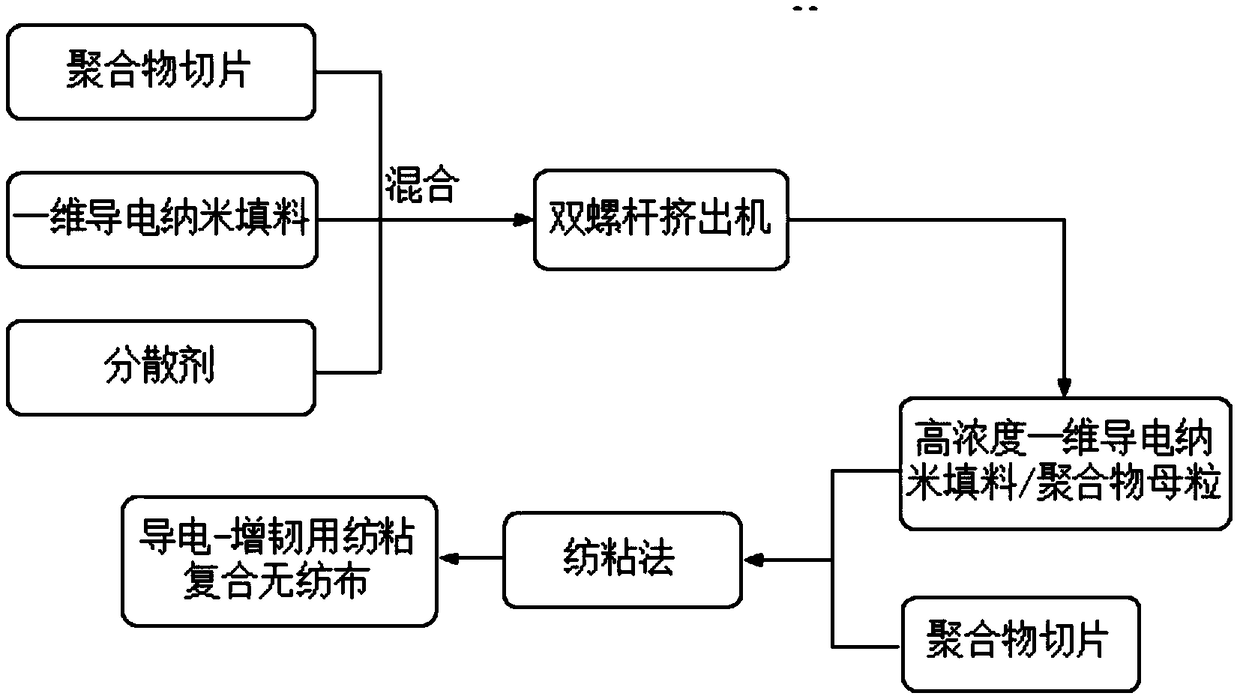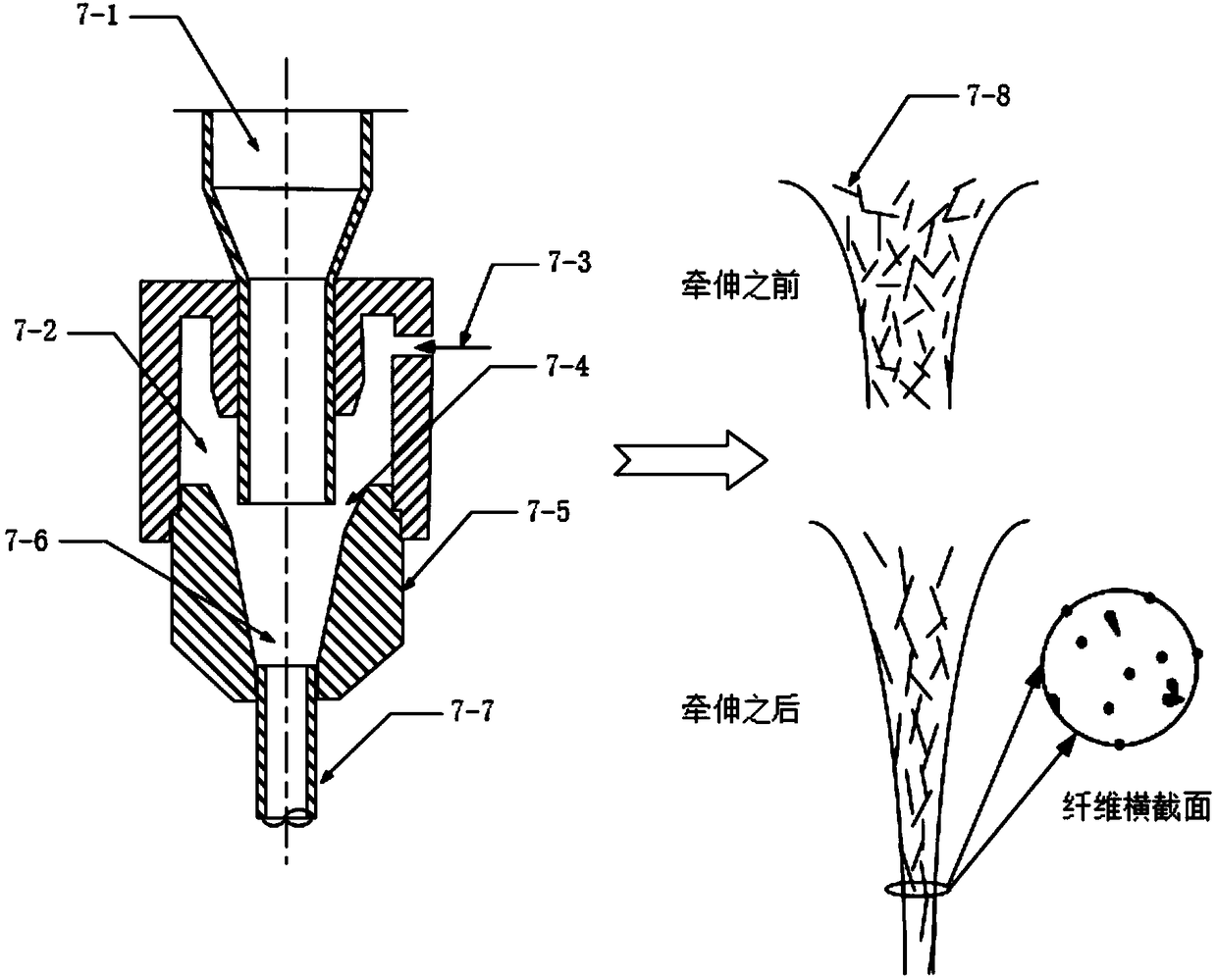A kind of preparation method of conductive-toughened spunbonded composite nonwoven fabric
A technology of non-woven fabric and spunbond method, which is applied in the manufacture of conductive/antistatic filaments, non-woven fabrics, textiles, and papermaking. It can solve the impact of composite material weight, small fiber draft multiple, and spinneret hole blockage, etc. problem, to achieve the effect of reducing the conductive percolation threshold, high drafting ratio, and fine fiber diameter
- Summary
- Abstract
- Description
- Claims
- Application Information
AI Technical Summary
Problems solved by technology
Method used
Image
Examples
Embodiment 1
[0056] Select 80 parts of polyester chips, whose MFI is 35g / 10min, 15 parts of carbon nanotubes with a diameter of 7nm and an aspect ratio of 1500, and 5 parts of polyacrylic acid sodium salt. Extruded by a screw extruder, cooled and molded to obtain a composite polyester masterbatch containing high-concentration carbon nanotubes.
[0057] The specific preparation steps of this composite polyester masterbatch containing high-concentration carbon nanotubes are as follows:
[0058] (1) Dry the polyester chips and carbon nanotubes in advance, then add the polyester chips, carbon nanotubes and polyacrylic acid sodium salt into a high-speed mixer according to the mass ratio, and control the mixing temperature at 100 ° C to make it Mix well and mix well.
[0059] (2) The above-mentioned mixture is fed from the hopper of the screw extruder, the screw speed is controlled at 40r / min, and the melt temperature at the extrusion end of the screw extruder is set at 270°C, after extrusion, ...
Embodiment 2
[0068] Select 85 parts of polyphenylene sulfide chips, whose MFI is 70g / 10min, 12 parts of silver nanowires with a diameter of 40nm and an aspect ratio of 800, and 3 parts of polyethylene glycol, and mix the three components by a high-speed mixer Extruded by a twin-screw extruder, cooled and molded to obtain a composite polyphenylene sulfide masterbatch containing high-concentration silver nanowires.
[0069] The specific preparation steps of this composite polyphenylene sulfide masterbatch containing high-concentration silver nanowires are as follows:
[0070] (1) Dry the polyphenylene sulfide slices and silver nanowires in advance, and then add the polyphenylene sulfide slices, silver nanowires and polyethylene glycol into the high-speed mixer according to the mass ratio, and the mixing temperature is controlled at 115 ℃ to make it fully mixed.
[0071] (2) The above-mentioned mixture is fed from the hopper of the screw extruder, the screw speed is controlled at 45r / min, an...
PUM
| Property | Measurement | Unit |
|---|---|---|
| diameter | aaaaa | aaaaa |
| diameter | aaaaa | aaaaa |
| electrical conductivity | aaaaa | aaaaa |
Abstract
Description
Claims
Application Information
 Login to View More
Login to View More - R&D
- Intellectual Property
- Life Sciences
- Materials
- Tech Scout
- Unparalleled Data Quality
- Higher Quality Content
- 60% Fewer Hallucinations
Browse by: Latest US Patents, China's latest patents, Technical Efficacy Thesaurus, Application Domain, Technology Topic, Popular Technical Reports.
© 2025 PatSnap. All rights reserved.Legal|Privacy policy|Modern Slavery Act Transparency Statement|Sitemap|About US| Contact US: help@patsnap.com



